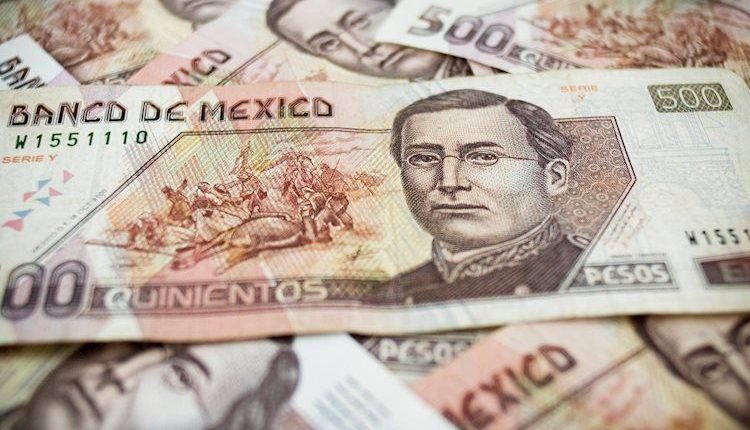- The Mexican Peso hovers around 17.60s on hawkish Bank of Mexico hold.
- Banxico upward revised its inflation forecasts in 2024 from 3.57% to 3.875%.
- The USD/MXN remains downward pressured but needs to break support at 17.5000 to test the 17.00 figure.
The Mexican Peso (MXN) appreciated further against the US Dollar (USD) after the Bank of Mexico – also known as Banxico, held rates unchanged at 11.25%, adding that it would be necessary to keep rates “at its current level for an extended period.” The USD/MXN pair reacted to the downside, breaking the previous daily low of 17.5792 and accelerating its downtrend towards the 17.5000 area.
In its monetary policy statement, Banxico’s Government Board stated that the outlook for inflation remains uncertain throughout the entire horizon, with risks tilted to the upside. Mexico’s central bank added that economic activity and the labor market remain strong, and upward revised forecasts for headline and core inflation, as it expects a “gradual decline in inflation that previously foreseen.”
Daily Digest Market Movers: Mexican Peso appreciates further below 17.60 after Banxico’s move
- Mexico’s Unemployment Rate edged lower from 3.1% in July to 3.0% MoM in August, said the National Statistics Agency (INEGI).
- September’s first-half inflation report in Mexico was 4.44%, down from 4.64% in August, according to the National Statistics Agency, INEGI.
- The Mexican Peso recovered some ground after depreciating to levels last seen in late May 2023 and approached the 200-day Simple Moving Average (SMA) at 17.88411 on risk aversion.
- Being an emerging market currency, the Mexican Peso weakens on risk aversion. Therefore, news emerging of a possible US government shutdown triggered a flow toward safe-haven assets, weakening the Mexican Peso.
- The drop in Oil prices weakens the Mexican currency, as its economy relies on crude exports.
- Moody’s rating agency warned the fiscal strategy of the Mexican government in 2024 must be credible after the June elections in defining the country’s stable outlook.
- In July, Moody’s lowered Mexico’s rating to “Baa2” with a “stable” outlook but warned of fiscal pressures for the next government due to the 2024 economic budget.
- US Treasury bond yields jumped after September’s Federal Reserve Open Market Committee (FOMC) decision to hold rates unchanged. However, the dot plots above 5% in 2024 confirmed the Federal Reserve’s higher-for-longer mantra.
- US Dollar weakness, to keep the USD/MXN pair downward biased as traders eye 17.50.
Technical Analysis: Mexican Peso
The Mexican Peso found its foot after depreciating to 17.8161 versus the US Dollar, near the 200-day Simple Moving Average (SMA) at 17.8410, though it is staging a comeback and trimming some of its losses, currently below the 17.6000 area. Given Mexico’s central bank’s restrictive stance, the USD/MXN might pull back towards the August 3 high at 17.4258, followed by the 20-day Simple Moving Average (SMA) at 17.3069, before extending its gains. Although the Relative Strength Index (RSI) exited from overbought territory, the uptrend remains intact.
Inflation FAQs
Inflation measures the rise in the price of a representative basket of goods and services. Headline inflation is usually expressed as a percentage change on a month-on-month (MoM) and year-on-year (YoY) basis. Core inflation excludes more volatile elements such as food and fuel which can fluctuate because of geopolitical and seasonal factors. Core inflation is the figure economists focus on and is the level targeted by central banks, which are mandated to keep inflation at a manageable level, usually around 2%.
The Consumer Price Index (CPI) measures the change in prices of a basket of goods and services over a period of time. It is usually expressed as a percentage change on a month-on-month (MoM) and year-on-year (YoY) basis. Core CPI is the figure targeted by central banks as it excludes volatile food and fuel inputs. When Core CPI rises above 2% it usually results in higher interest rates and vice versa when it falls below 2%. Since higher interest rates are positive for a currency, higher inflation usually results in a stronger currency. The opposite is true when inflation falls.
Although it may seem counter-intuitive, high inflation in a country pushes up the value of its currency and vice versa for lower inflation. This is because the central bank will normally raise interest rates to combat the higher inflation, which attract more global capital inflows from investors looking for a lucrative place to park their money.
Formerly, Gold was the asset investors turned to in times of high inflation because it preserved its value, and whilst investors will often still buy Gold for its safe-haven properties in times of extreme market turmoil, this is not the case most of the time. This is because when inflation is high, central banks will put up interest rates to combat it.
Higher interest rates are negative for Gold because they increase the opportunity-cost of holding Gold vis-a-vis an interest-bearing asset or placing the money in a cash deposit account. On the flipside, lower inflation tends to be positive for Gold as it brings interest rates down, making the bright metal a more viable investment alternative.
Read the full article here

